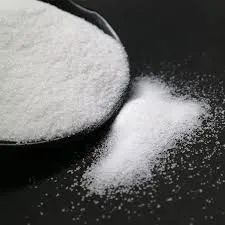Effluent Chemicals Myanmar's Environmental Challenge
Effluent chemicals, or wastewater pollutants, pose a significant threat to both the environment and public health. In Myanmar, rapid industrialization and urbanization have led to an increase in the discharge of harmful chemicals into water bodies. This article explores the sources, impacts, and possible solutions to the issue of effluent chemicals in Myanmar.
Sources of Effluent Chemicals
In Myanmar, the main sources of effluent chemicals include industrial activities, agricultural runoff, and domestic wastewater. Factories, particularly those in the textile, food processing, and mining sectors, often release untreated or inadequately treated wastewater directly into rivers and streams. This wastewater may contain heavy metals, organic compounds, and toxins that can harm aquatic life and contaminate drinking water supplies.
Agriculture, a vital sector of the Myanmar economy, contributes to the problem through the use of fertilizers and pesticides. When it rains, these chemicals wash off into nearby waterways, leading to nutrient pollution and harming aquatic ecosystems. Furthermore, improper disposal of household waste can also lead to significant amounts of organic and inorganic pollutants entering the environment.
Impacts on Environment and Health
The impacts of effluent chemicals on the environment are widespread and severe. Waterways contaminated with pollutants can no longer support healthy ecosystems. Fish and other aquatic organisms suffer from reduced oxygen levels, toxic substances, and habitat destruction. This decline in biodiversity can disrupt local fisheries, which are a crucial source of food and livelihood for many communities.
effluent chemicals

Public health is also at risk due to polluted water sources. Ingestion of contaminated water can lead to a variety of health issues, including gastrointestinal diseases, neurological disorders, and even cancer. Vulnerable populations, such as children and the elderly, are particularly at risk. The lack of access to clean water and proper sanitation exacerbates these health risks, leading to a cycle of poverty and disease.
Solutions and Mitigation Strategies
Addressing the issue of effluent chemicals in Myanmar requires a multifaceted approach. First and foremost, stricter regulations should be implemented to govern the discharge of industrial wastewater. The government must enforce existing environmental laws and introduce penalties for non-compliance to deter polluting practices.
Investment in wastewater treatment infrastructure is crucial. Many industries in Myanmar lack adequate treatment facilities for their effluents. By providing financial incentives and technical support for the development of treatment plants, both the government and private sector can contribute to reducing pollution levels.
Public awareness campaigns can also play a significant role in mitigating the problem. Educating communities about the importance of proper waste disposal and the impacts of chemicals on health and the environment can lead to more responsible behaviors. Encouraging sustainable agricultural practices can reduce reliance on chemical fertilizers and pesticides, further decreasing the number of pollutants entering waterways.
Conclusion
Effluent chemicals present a major environmental and public health challenge for Myanmar, necessitating immediate attention and action. By identifying the sources of pollution, understanding their impacts, and implementing effective solutions, Myanmar can begin to address this pressing issue. Protecting water resources is essential for the well-being of both people and ecosystems, ensuring a sustainable and healthy future for the country. The collaboration of government, industry, and communities will be vital in achieving these goals and safeguarding Myanmar’s natural heritage for generations to come.

